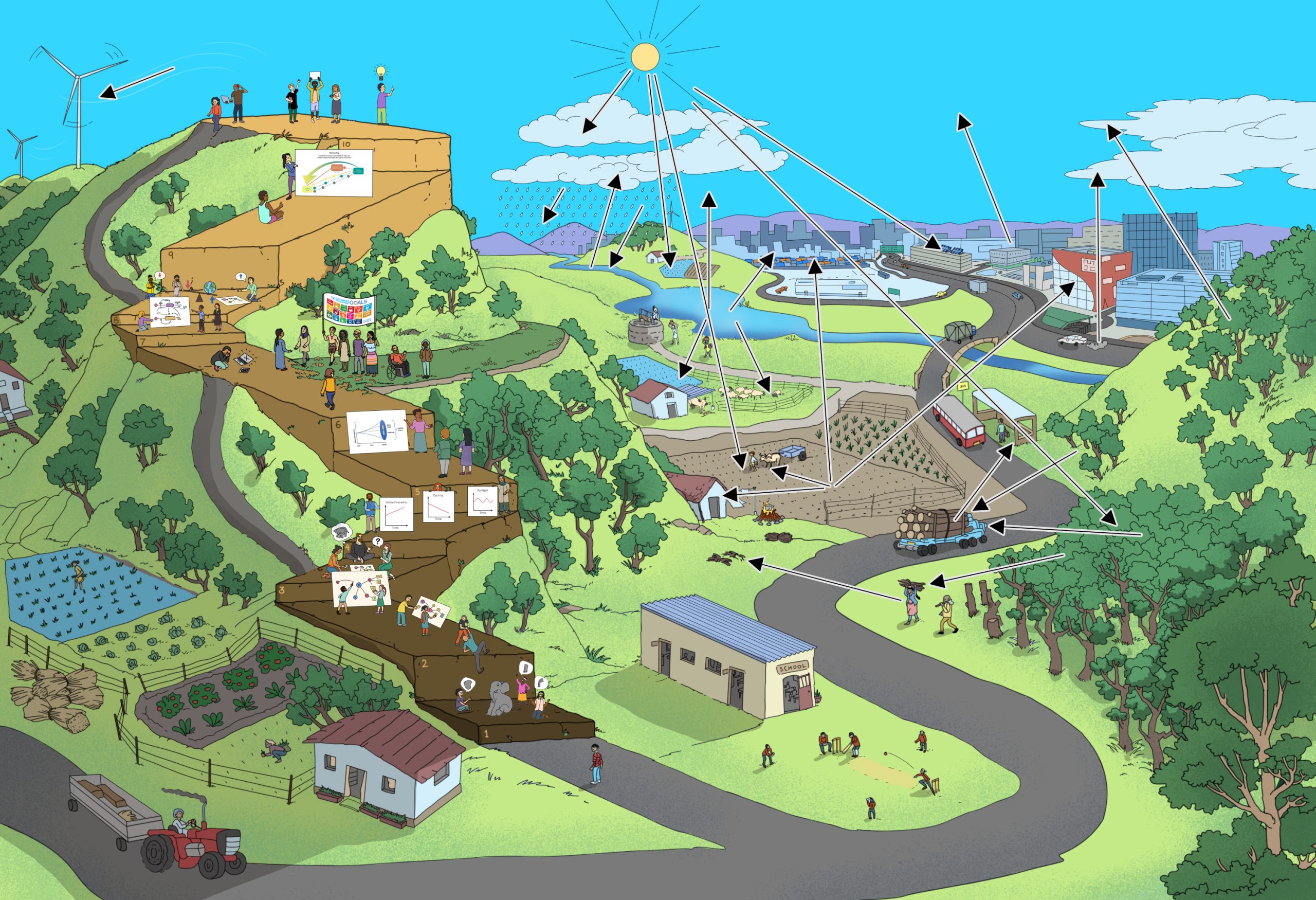Web of Life
Suitable for Steps 2, 3
Duration
30 to 45 minutes
Material Needed
Name cards (as many as the number of learners)
Safety pins (same number as cards) or string to wear the cards
Ball of string (at least 250 m)

Group size
30 to 35
Objective
To demonstrate the interconnectedness of various elements in the environment.
Description
- Based on the list provided at the end, make a set of cards with the names of the animal/ bird/ plant/ resource, etc. The learners can illustrate these cards.
- There should be as many cards as there are learners. Cards can be made of chart paper cut into rectangular pieces of about 5 x 8 cm. A safety pin can be put through the top of each card or use a strong string to wear the cards.
- Make sure to include and distribute cards depicting the four main elements of nature: Sun, Soil, Air and Water.
- Ask the learners to sit in a circle.
- Take the ball of string and give it to the learner who has the Sun card. It is appropriate to begin with the Sun because all life is made possible by it. Let the learner symbolizing the Sun loop one end of the string around her or his finger and pass the ball of string to any aspect of nature that the learner feels is related or connected to. For example, the ‘Sun’ may pass it on to ‘Tree’ because the ‘Sun’ gives energy to plants or trees. The learners should state the reason why she feels related to this element.
- The ‘Tree’ then winds the string once or twice around her or his finger after ensuring that it is not loose between the ‘Sun’ and her or him. The learner symbolizing the ‘Tree’ then passes it to another aspect he or she feels related to, e.g., ‘Fruit’. So, the line of relationships continues as the ball of string unwinds and begins to form a pattern which the learners/learners hold together. The ball of string is thus completely used.
- Ask the learners to see the web-like effect of the string.
- Then ask them to raise the web chest high. Let them hold it tightly so that if the web is pressed down it does not sag and touch the ground. Ask the learners to observe, feel and note this.
- Ask the learners what would happen if some of these elements were destroyed. Let the learner representing these elements drop the string. Notice the visual effect. More elements may be dropped to dramatize the effect.
- Now press the web down. It would probably touch the ground because it is loose. Ask the learners what would happen if the Sun or the other three major elements of nature were disturbed.
- Conclude the game by explaining to the learners how inter-relationships and interconnectedness exist and why they are important.
Contribution to Systems Thinking competence
Web of Life may help learners to understand interconnections between different elements in an ecosystem, or a social-ecological system.
When trying to develop a systems map, it may help to identify missing elements.
Resource
To see a demonstration of the Web of Life watch
1.Sun
2.Air
3.Water
4.Soil
5.Tree
6.Fruit
7.Parrot
8.Algae
9.Fish
10.Eagle
11.Turtle
12.Insect
13.Frog
14.Mosquito
15.Lizard
16.Leaf
17.Rat
18.Butterfly
19.Ant
20.Student
21.Grass
22.Dead leaf
23.Earthworm
24.Root
25.Shrub
26.Seed
27.Fungus
28.Dragonfly
29.Monkey
30.Spider
31.Snake
32.Mongoose
33.Kingfisher
34.Washer man
35.Woodcutter
36.Buffalo
37.Honey
38.Honeybee
39.Squirrel
40.Moss
41.Grasshopper
42.Plastic bag
43.Deadwood
44.Paper
45.Crocodile

